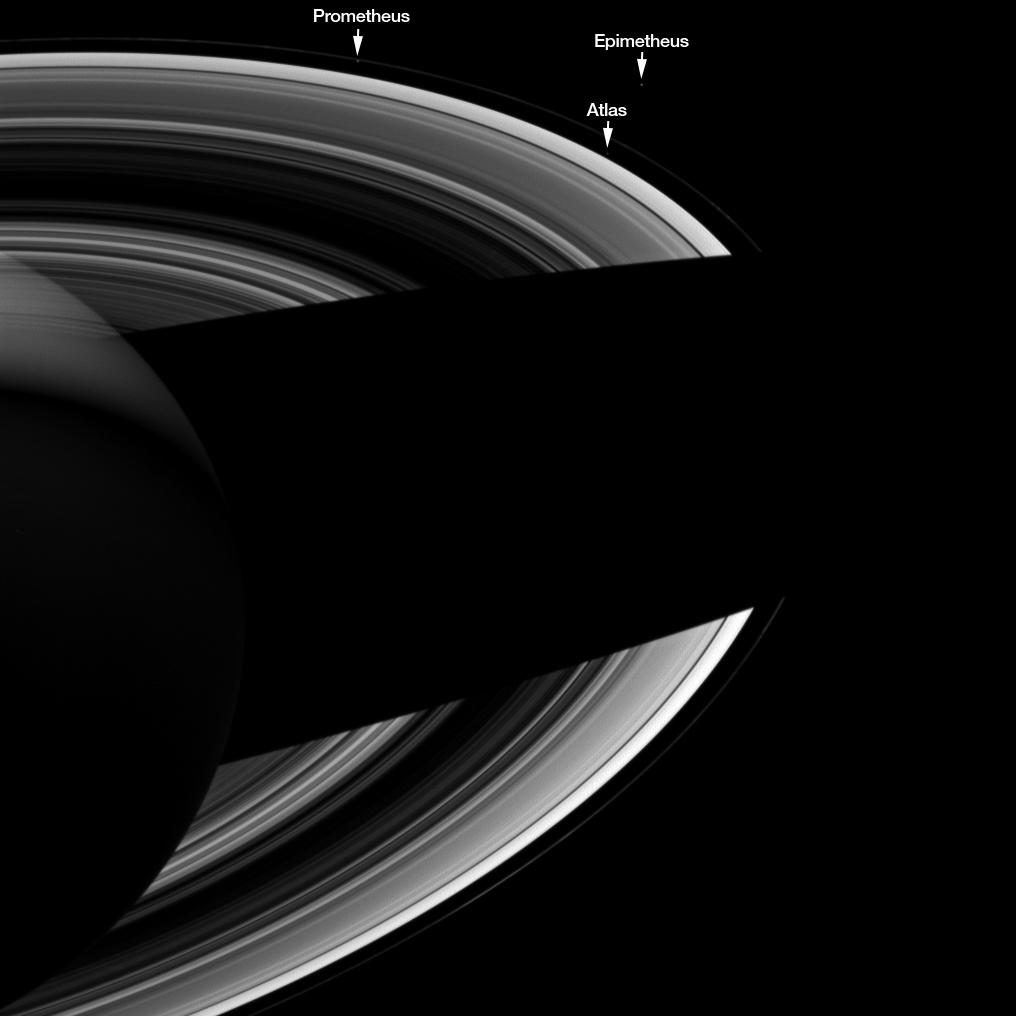Brother Moons (Labeled)

| Language |
|
|---|
Saturn's small moons Atlas, Prometheus, and Epimetheus keep each other company in this Cassini spacecraft image of the planet's night side. It seems fitting that they should do so since in Greek mythology, their namesakes were brothers.
Prometheus (53 miles, or 86 kilometers across) is just inside the F ring in this image, while Epimetheus (70 miles, or 113 kilometers across) is farther from the rings, due right of Prometheus in this image. Atlas (19 miles, or 30 kilometers across) is between the A and F rings almost right below Epimetheus and is very faint.
This view looks toward the unilluminated side of the rings from about 30 degrees below the ringplane. The image was taken in visible light with the Cassini spacecraft wide-angle camera on Sept. 19, 2012.
The view was obtained at a distance of approximately 1.4 million miles (2.2 million kilometers) from Saturn and at a Sun-Saturn-spacecraft, or phase, angle of 96 degrees. Image scale is 80 miles (128 kilometers) per pixel. Epimetheus has been brightened by a factor of 1.5 and Atlas' brightness has been enhanced by a factor of 3 relative to the rings and Prometheus to improve visibility.
The Cassini-Huygens mission is a cooperative project of NASA, the European Space Agency and the Italian Space Agency. The Jet Propulsion Laboratory, a division of the California Institute of Technology in Pasadena, manages the mission for NASA's Science Mission Directorate in Washington. The Cassini orbiter and its two onboard cameras were designed, developed and assembled at JPL. The imaging team is based at the Space Science Institute, Boulder, Colo.
For more information about the Cassini-Huygens mission visit http://saturn.jpl.nasa.gov or http://www.nasa.gov/cassini . The Cassini imaging team homepage is at http://ciclops.org .
Credit: NASA/JPL-Caltech/Space Science Institute
